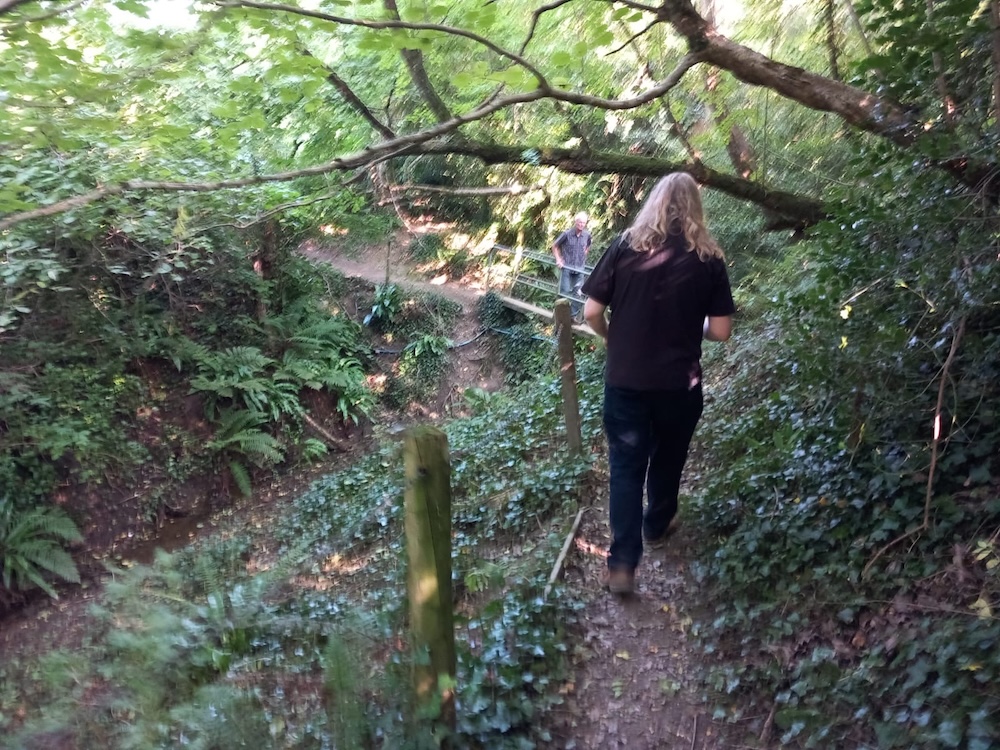SRA Annual Report 2024-25: Building Local Resilience
Support for Somerset communities at risk of flooding largely revolves around three main questions:
- If there was a flood tomorrow, could you respond well?
- Do you understand and monitor how water flows in your landscape and know how to deal with any issues that present themselves?
- Is there anything you can do to help reduce your future flood risk?
With these questions in mind, SRA community engagement officers Bel Deering and Paul Elliston (pictured below) had a busy year.

They supported 74 communities, too many to name individually on the map (below).

The places are: Alhampton, Baltonsborough, Batcombe, Bridgehampton, Bridgwater, Buckland Dinham, Chard, Cheddar, Chedzoy, Compton Pauncefoot & Blackford, Cotford St Luke, Coxbridge, Coxley, Cranmore, Creech St Michael, Croscombe, Dean, Drayton, Edington, Evercreech, Galhampton, Glastonbury, Godney, Greinton, Ham (near Ruishton), Henlade, Ilminster, Isle Abbotts, Kingston St Mary, Knole, Lamyatt, Langford Budville, Langport, Lower Somerton, Marston Magna, Martock, Milverton, Minehead, Misterton, Monksilver, Montacute, Muchelney, Mudford, North Cadbury, North Wootton, Nunney, Nynehead, Oake, Perry Green, Pitcombe, Pitney, Podimore, Queen Camel, Rimpton, Rode, Seavington, Shapwick, Shepton Mallet, South Cadbury & Sutton Montis, South Petherton, Sparkford, Spaxton, Stoney Stratton, Taunton, The Charltons, Timberscombe, Trull, Wedmore, Wells, Wembdon, West Camel & Urgashay, Williton, Yarlington and Yeovilton.
Ever since the SRA was launched in 2015, a crucial purpose of this workstream has been to help people who have been flooded. Not during a flood or in the immediate aftermath of a flood: that kind of emergency response is the role of organisations such as Devon & Somerset Fire & Rescue Service, the Environment Agency and Somerset Council, sometimes working with volunteers. The SRA comes in more when people are taking stock, individually and together, reflecting and wanting to move forwards.
So it was in 2015-16 that months of work went into Community Resilience Plans in places worst affected by the floods of 2013-14.
So, still, in 2024-25 the SRA has offered steady, longer-term support to people in Croscombe, Shepton Mallet, Chard, Ilminster, and South Petherton, all places recently hit by bad flooding.
With Local Community Networks in Dowsborough (Williton), Minehead and Watchet, Shepton (Shepton Mallet), Taunton, Wellington and Wiveliscombe, and in Chedzoy, South Cadbury and Sutton Montis, and Stoke St Michael, SRA staff worked with Somerset Council’s Emergency Planning, Response and Recovery team to run workshops about developing Community Emergency Plans.
Across Somerset the SRA has sought to foster greater understanding of local flood risks. Firstly, through encouraging better knowledge of the ways that local watercourses actually behave, especially with climate change bringing more intense rain and putting greater strain on drainage and river systems. Secondly, through promoting accurate expectations about the maintenance of watercourses, especially about who is responsible for doing what. The ambition is to try to get problems dealt with promptly. So, for example, communities across Somerset have been encouraged to map watercourses and surface water flow pathways. Workshops have been held about the so-called ‘riparian’ rights and responsibilities that come with owning watercourses, and structures such as drains and culverts, in Cranmore, Edington and Wells and at Somerset Wildlife Trust’s offices at Avalon Marshes. Many communities have also been urged to think about changes that they would like to see made, or that they could make themselves, and to learn more about matters such as Property Flood Resilience.
The SRA’s community engagement officers represent the SRA within the Somerset Prepared partnership. In 2024-25, they took leading roles in refreshing the Somerset Prepared website and organising the annual Somerset Prepared Community Resilience Conference. Held in November, this conference attracted 150 delegates to Bridgwater. Attendees heard a keynote address about flooding from Mary Long-Dhonau OBE (popularly known as ‘Flood Mary’) and took part in interactive sessions about aspects of community resilience. Sessions led by the SRA covered riparian rights and responsibilities and the SRA’s new Community Flood Action Fund. Below: ‘Flood Mary’.

Somerset Prepared also held five smaller ‘roadshows’, organised by and featuring the SRA, in Bickenhall, Mark, Monksilver, Queen Camel and Shepton Mallet. These events gave people chance to talk to relevant agencies (Environment Agency, Emergency Volunteer Action Group, Devon & Somerset Fire & Rescue Service, Avon & Somerset Police, Wales & West Utilities, Somerset Wildlife Trust and FWAG SW). They were combined with workshops for new and already-active community flood wardens: 120 attended.
In addition, the SRA’s community engagement officers enjoyed interacting with 1175 primary school children, through assemblies and workshops held to raise awareness of flooding, flood risks and safety.
Text continues below images of some primary school activities.
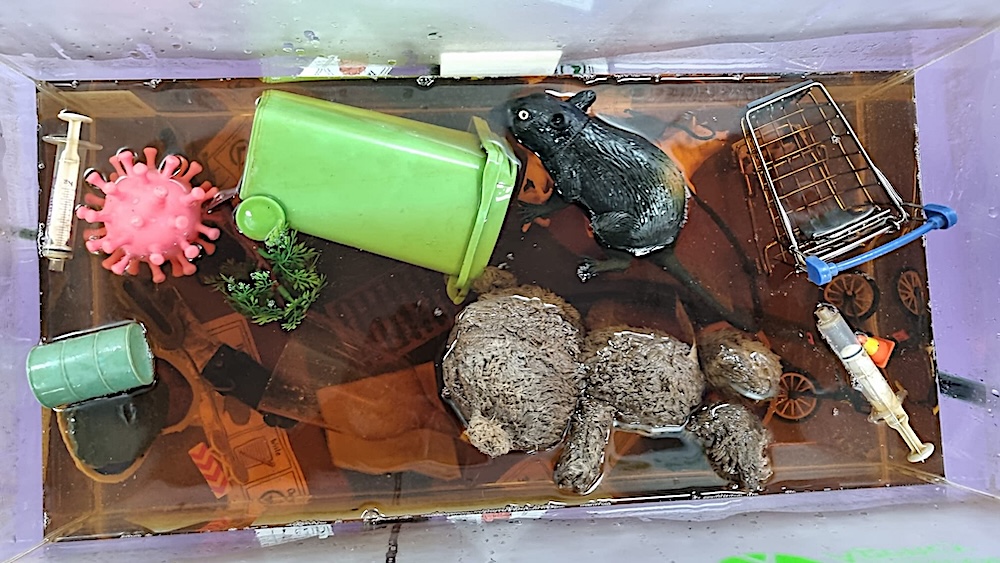

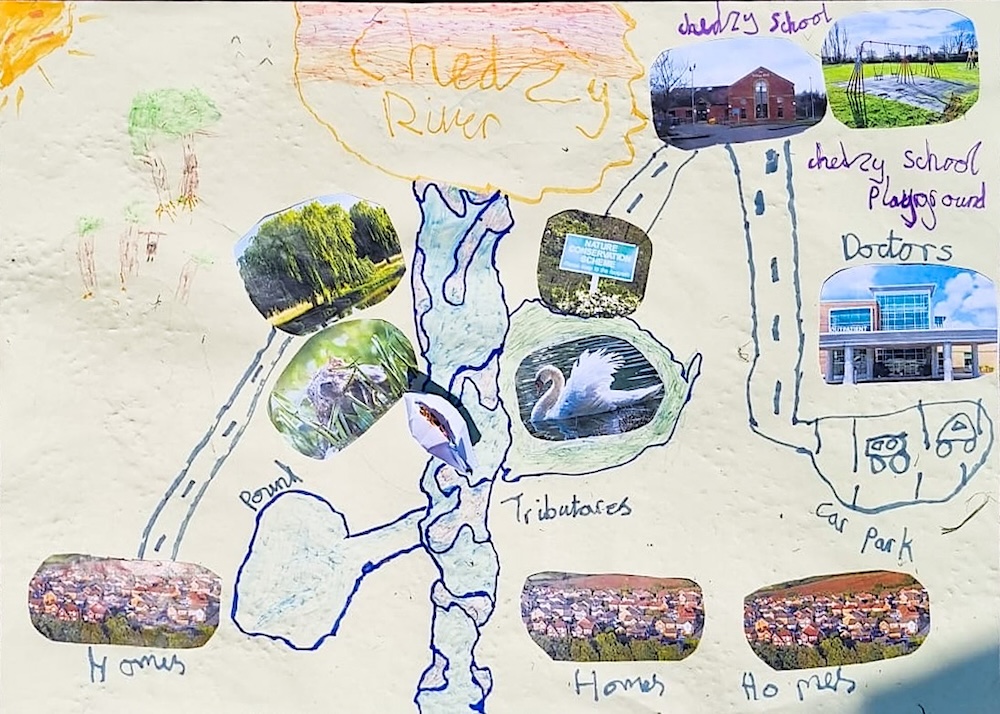
These sessions drew upon resources specially prepared with Somerset Council’s Curriculum & Topic Lead officer. Schools visited were Bradford & Nynehead CE (VC), Curry Mallet, Creech St Michael C of E, Enmore, Herne View C of E, Kingsbury Episcopi, Kingsmoor, Martock C of E, Meare Village, North Town, Oake, St Margaret’s CEVA, West Pennard C of E, and Willowdown. At Strode College, 33 students attended a talk.
The SRA sponsored an exhibition called ‘Under the Surface’ at the Somerset Rural Life Museum in Glastonbury. This marked the 10th anniversary of the Somerset floods of 2013-14 by showing photographs from Matilda Temperley’s sold-out publication Under the Surface: Somerset Floods, alongside previously unpublished colour photographs taken by her during the winter of 2013-14 and newly commissioned images.
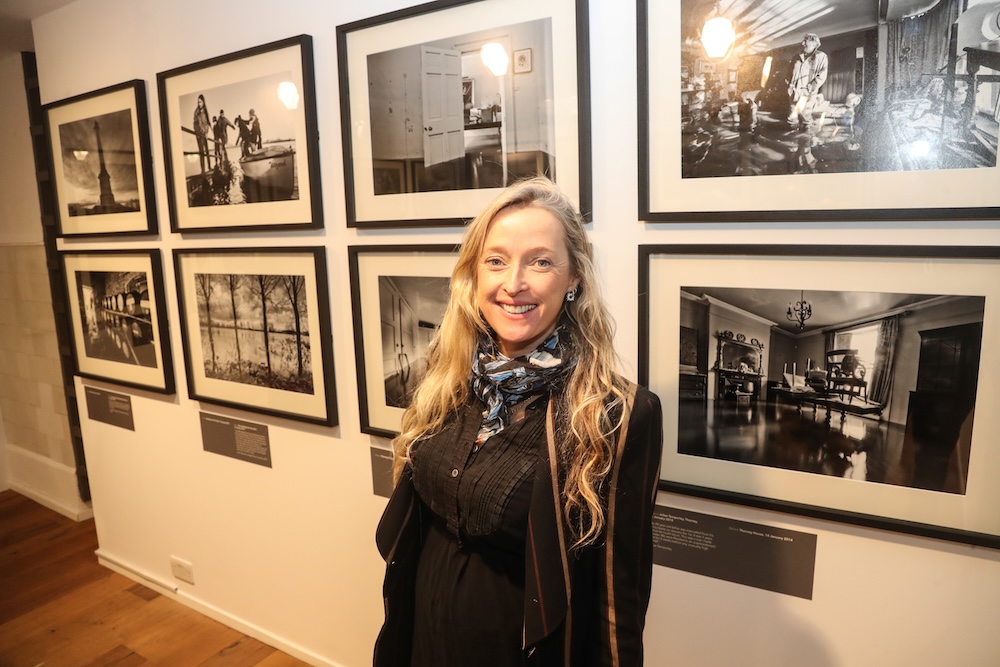
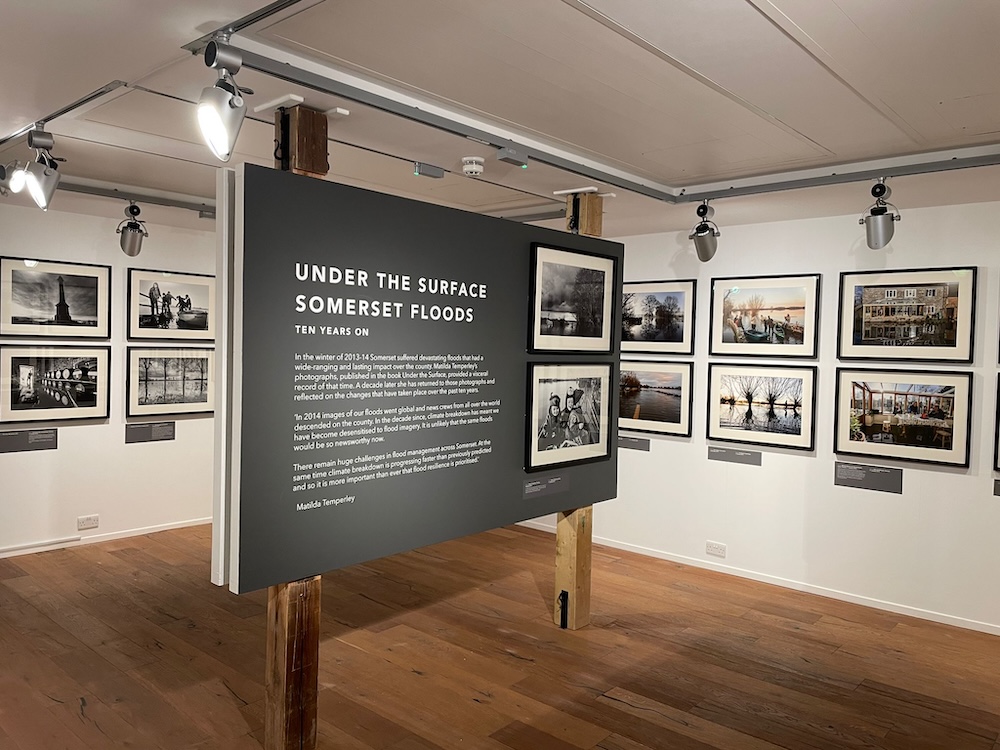
Associated events at the museum included ‘The Future of Water in Somerset’ which had speakers from Wessex Water, Somerset Rivers Authority, and FWAG SW and questions from the audience. There were also trials of Flood Cafés, safe and caring places for people affected by flooding to share experiences, and several family workshops on flooding themes. Subsequently a Flood Café was held in Wells, and further family-friendly workshops were run at Somerton and Langport libraries.
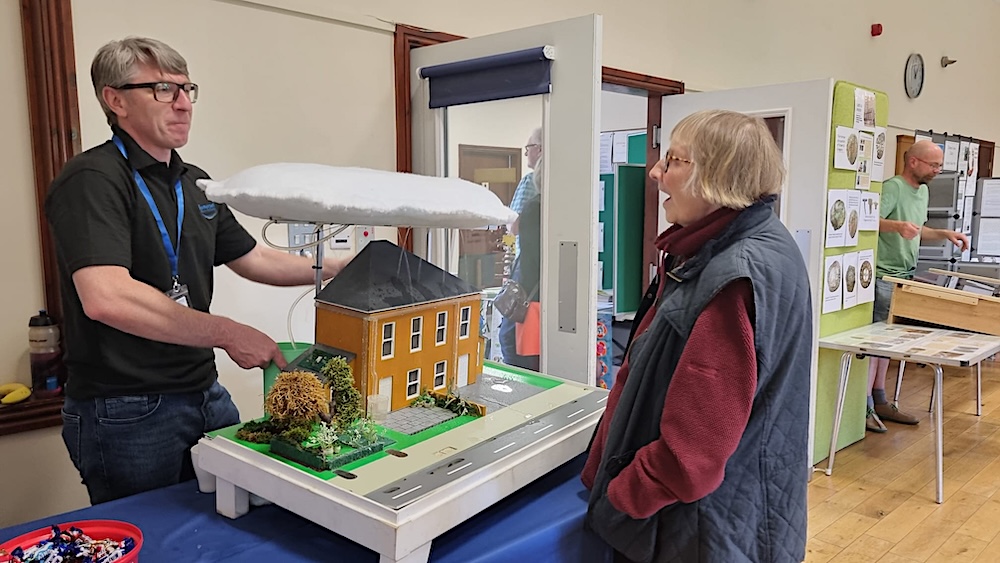
SRA staff attended the Stoke St Gregory EnviroFair (above, with SRA Manager David Mitchell); provided community engagement support to projects in other SRA workstreams; helped with Somerset Council flood investigations; and attended Local Community Network meetings.
Preparations began during 2024-25 for several potential future projects, including the development of new online resources about flooding, of analytical measures to help identify communities in most need, and of possible ways of enabling flood wardens to close roads to stop people driving through them and endangering themselves and others. Taking inspiration from the SRA Strategy 2024-34, efforts have also begun to establish a catchment-based approach to community resilience in the area around the River Alham (where Paul Elliston is pictured below on a fact-finding walk in Lamyatt).
